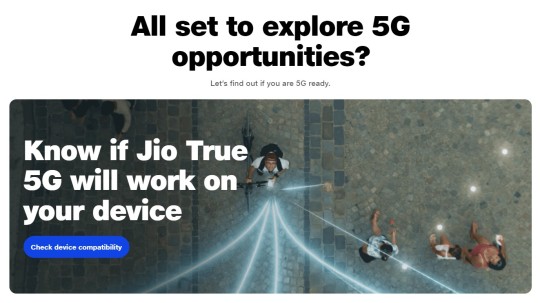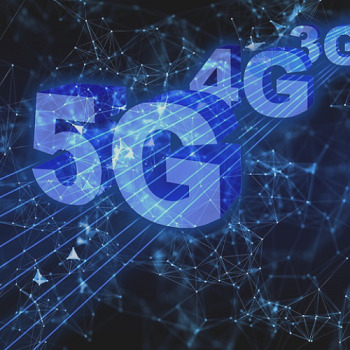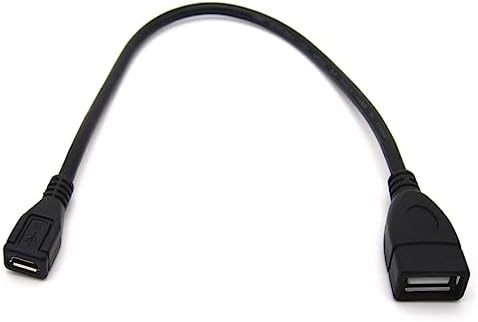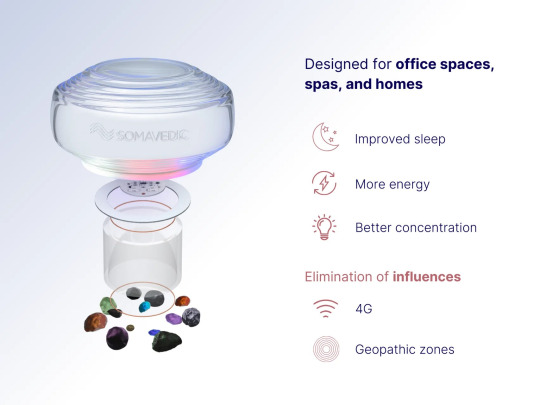#5G Devices
Text

Check your device is 5g compatible with jio.com
0 notes
Text
Best camera smartphones under 15000 in India 2023: Samsung, Redmi, Motorola, and more- Check here | Technology News
These days, smartphones are a part of everything we do. They are used by us for many different purposes, such as document storage, social networking, photography, and communication. There was a time, smartphones were only available to a select group of high-end consumers who could afford to purchase a phone that cost around Rs. 30,000 or more. But now the times have changed and most of the people…

View On WordPress
#5G Devices#5G smartphones#Best 5G smartphones#Best 5G Smartphones under 15000#Best Camera Smartphones#Best Camera Smartphones under 15000#infinix#iqoo#mobile phones#Motorola#redmi#samsung#Smartphones#Top 5 Camera Smartphone#Top 5 Camera Smartphones#Top 5 Smartphones
0 notes
Link

It is anticipated that rising internet interest and entrance will encourage interest in the 5G devices, be it cell phones or broadband services.
0 notes
Text
Hey. Hey look at me. *shakes you by the shoulders* Don't buy a fucking Vizio smart tv. I know they're cheap. They're cheap for a reason. This thing floats banner ads across my screen while I'm watching tv. The home screen is nothing but ads. It takes 20 minutes just to find the app you want to open because it's so lagged down by all the ads. The buttons don't do what they're supposed to. It will reset your shit everytime it updates which is every other day. Sometimes it has a completely different layout for no reason. please get literally anything else
#this is the stupidest worst smart device ive ever owned and i had a fire stick that was 6 years out of date#Today it has decided that all of the shortcut buttons lead to the home screen#Also? No 5g internet capacity. It has the worst modern internet receptor I've seen#It keeps rearranging my apps and signing me out and I'm going to smash it with a hammer#My roku would never
3 notes
·
View notes
Link
This is an excellent result even for flagships Xiaomi today introduced the Redmi Note 13 line of smartphones, which so far starts with the Redmi Note 13 5G model costing only $150. A photo has already appeared on the Internet that demonstrates a surprisingly narrow frame around the screen for this segment. [caption id="attachment_58428" align="aligncenter" width="270"] Xiaomi Redmi Note 13 5G[/caption] Insider Ice Universe published a photo of the Note 13 from the side of the screen. As you can see, the frame is very narrow. The $150 Xiaomi Redmi Note 13 5G has an incredibly narrow frame around the screen for this segment This is the frame of the Note 13 just released by Xiaomi. This cell phone costs $150. Only 150 dollars! The frame is very narrow even for many current flagships, not to mention the price segment of $150–200. Let's remember that for this money the smartphone also offers a 120 Hz screen, SoC Dimensity 6080, 108-megapixel camera, 8/128 GB of memory, and a thin body (7.6 mm).
#5G#Android#battery_life#budget_friendly#camera#device#Display#Features#mid_range#MIUI#mobile#Performance#price#Redmi_Note_13_5G#release#smartphone#specifications#technology#Xiaomi#Xiaomi_ecosystem#Xiaomi_Redmi
3 notes
·
View notes
Text
USB 2.0 Extension Cable USB 2.0 Female to Micro USB Female Extender Converter Data Transfer Adapter for Phone Laptop Consumer Electronics Accessories Digital Cable Connector Cable
Price: (as of – Details)
https://amzn.to/3PRUe37
USB 2.0 Extension Cable USB 2.0 Female to Micro USB Female Extender Converter Data Transfer Adapter for Phone Laptop Consumer electronics accessories Digital cable Connector cableFeatures:Brand new and Contains one USB 2.0, one Micro USB ports, provide high data transfer and charging your device simultaneously.Light weight and small size,easy to…

View On WordPress
#android tv#consumer electronics#desktop computer#feature phone#games console#games console free fire#laptop#most popular mobile devices in us#P C MOUSE#smart watch for men#smart watch under 1000#smart watches for women#smartphone#smartphone 5g#smartphone under 10000#smartphone under 15000#smartphone under 20000#smartphone under 5000#smartphones under 30000#tablet device#tv showcase#tv unit designs#virtual reality device#virtual reality devices list#wireless mouse mobile
0 notes
Text
There are two configurations available: one with 6GB of RAM and 128GB of storage for $599 and another with 8GB of RAM and 256GB of storage for $679. The storage of both models can be expanded via microSD, and the phone features a modular design that can be easily disassembled using a standard Phillips #00 screwdriver to replace broken components. It also has an IP54 rating, meaning the device is protected against dust and water sprays.
The Murena Fairphone 4 will ship to US customers with 5G and dual SIM support, a removable 3905mAh battery, a 48-megapixel main camera, a 48-megapixel ultrawide, and a 25-megapixel selfie camera. The phones will be available to order exclusively from Murena’s webstore starting today.
22K notes
·
View notes
Text
Use JGUZ4J at checkout to get 10% off your entire purchase at Somavedic!

#Somavedic#Water#Harmonization#Health#Wellness#Aromatherapy#Device#Mitigation#EMF#5G#Amber#Vedic#Sky#Gold#Ruby#Cobalt#Wifi#Shopee#Cash#Pub#Ad#Affiliate
0 notes
Text
Samsung Galaxy S24 Ultra 5G - Elevate Your Mobile Experience at Sharaf DG Oman
Discover the epitome of smartphone excellence with the Samsung Galaxy S24 Ultra 5G at Sharaf DG Oman. Unleash unparalleled power, cutting-edge camera technology, and lightning-fast 5G connectivity. Dive into a world of innovation and redefine what's possible with the Samsung Galaxy S24 Ultra.
0 notes
Text
5G Testing Devices Market to See Huge Growth by 2023-2030

Advance Market Analytics added research publication document on Worldwide 5G Testing Devices Market breaking major business segments and highlighting wider level geographies to get deep dive analysis on market data. The study is a perfect balance bridging both qualitative and quantitative information of Worldwide 5G Testing Devices market. The study provides valuable market size data for historical (Volume** & Value) from 2018 to 2022 which is estimated and forecasted till 2028*. Some are the key & emerging players that are part of coverage and have being profiled are Keysight Technologies (United States), Rohde & Schwarz GmbH & Co KG (Germany), Fluke Corporation (United States), Qualcomm (United States), Intertek Group plc (United Kingdom), Anritsu (Japan), Tektronix, Inc. (United States), Viavi Solutions (United States), DEKRA (Germany), Spirent Communications (United Kingdom).
Get free access to Sample Report in PDF Version along with Graphs and Figures @ https://www.advancemarketanalytics.com/sample-report/165315-global-5g-testing-devices-market
5G testing devices are the equipment used in the network testing process which ensures the quality of hardware and software of the handheld device. The testing device spans the entire development lifestyle, integration, testing, deployment repair, and optimization of the 5G connectivity. This solution includes the range of test domains used for device development and verification. The various types of 5G testing devices include oscilloscopes, wireless network emulators, signal generators, HEV/grid emulators, and others.
Keep yourself up-to-date with latest market trends and changing dynamics due to COVID Impact and Economic Slowdown globally. Maintain a competitive edge by sizing up with available business opportunity in 5G Testing Devices Market various segments and emerging territory.
Influencing Market Trend
Continuous Research and Innovation in the Network Slicing and Internet of Things
Market Drivers
Demand for Flexibility in Supporting the 5G Connectivity Services
Need for Higher Data Rates, Lower Latency, and Greater Capacity in Connectivity
Increasing 5G Technology Integration in Various Industries
Opportunities:
Rising Government Spendings on Network Connectivity Advancements in Every Industry will Boost the 5G Testing Devices
Challenges:
High-Cost Investment on the 5G Testing Devices
Have Any Questions Regarding Global 5G Testing Devices Market Report, Ask Our Experts@ https://www.advancemarketanalytics.com/enquiry-before-buy/165315-global-5g-testing-devices-market
Analysis by Type (Oscilloscopes, Signal Generators, HEV/EV/Grid Emulators, Wireless Network Emulators, Others), End Use Industry (Consumer, Automotive, Industrial, Electronics, Medical, Others)
Competitive landscape highlighting important parameters that players are gaining along with the Market Development/evolution
• % Market Share, Segment Revenue, Swot Analysis for each profiled company [Keysight Technologies (United States), Rohde & Schwarz GmbH & Co KG (Germany), Fluke Corporation (United States), Qualcomm (United States), Intertek Group plc (United Kingdom), Anritsu (Japan), Tektronix, Inc. (United States), Viavi Solutions (United States), DEKRA (Germany), Spirent Communications (United Kingdom)]
• Business overview and Product/Service classification
• Product/Service Matrix [Players by Product/Service comparative analysis]
• Recent Developments (Technology advancement, Product Launch or Expansion plan, Manufacturing and R&D etc)
• Consumption, Capacity & Production by Players
The regional analysis of Global 5G Testing Devices Market is considered for the key regions such as Asia Pacific, North America, Europe, Latin America and Rest of the World. North America is the leading region across the world. Whereas, owing to rising no. of research activities in countries such as China, India, and Japan, Asia Pacific region is also expected to exhibit higher growth rate the forecast period 2023-2028.
Table of Content
Chapter One: Industry Overview
Chapter Two: Major Segmentation (Classification, Application and etc.) Analysis
Chapter Three: Production Market Analysis
Chapter Four: Sales Market Analysis
Chapter Five: Consumption Market Analysis
Chapter Six: Production, Sales and Consumption Market Comparison Analysis
Chapter Seven: Major Manufacturers Production and Sales Market Comparison Analysis
Chapter Eight: Competition Analysis by Players
Chapter Nine: Marketing Channel Analysis
Chapter Ten: New Project Investment Feasibility Analysis
Chapter Eleven: Manufacturing Cost Analysis
Chapter Twelve: Industrial Chain, Sourcing Strategy and Downstream Buyers
Read Executive Summary and Detailed Index of full Research Study @ https://www.advancemarketanalytics.com/reports/165315-global-5g-testing-devices-market
Highlights of the Report
• The future prospects of the global 5G Testing Devices market during the forecast period 2023-2028 are given in the report.
• The major developmental strategies integrated by the leading players to sustain a competitive market position in the market are included in the report.
• The emerging technologies that are driving the growth of the market are highlighted in the report.
• The market value of the segments that are leading the market and the sub-segments are mentioned in the report.
• The report studies the leading manufacturers and other players entering the global 5G Testing Devices market. Thanks for reading this article; you can also get individual chapter wise section or region wise report version like North America, Middle East, Africa, Europe or LATAM, Southeast Asia.
Contact US :
Craig Francis (PR & Marketing Manager)
AMA Research & Media LLP
Unit No. 429, Parsonage Road Edison, NJ
New Jersey USA – 08837
Phone: +1 201 565 3262, +44 161 818 8166
[email protected]
#Global 5G Testing Devices Market#5G Testing Devices Market Demand#5G Testing Devices Market Trends#5G Testing Devices Market Analysis#5G Testing Devices Market Growth#5G Testing Devices Market Share#5G Testing Devices Market Forecast#5G Testing Devices Market Challenges
0 notes
Text
Weekly output: wireless broadband rises, tech vs. trust, national spectrum strategy, Mozilla non-gift guide, AI meets robotics, robotics-startup fundraising, Qualcomm's on-device AI pitch, Starship flight test
This year’s business travel is in the books for me: With my return from Web Summit in Lisbon Friday, the rest of 2023 has no more out-of-town conference badges or hotel keys left. That’s pretty exciting, even if CES looms seven weeks away.
11/13/2023: T-Mobile Within Striking Distance of Becoming Fifth-Largest US ISP, PCMag
The way 5G has brought choice and competition to millions of American…

View On WordPress
#Big Tech#Desdemona#Energy Robotics#fixed wireless access#gift guide#Lisbon#National Spectrum Strategy#on-device AI#Privacy Not Included#Qualcomm#robotics startups#SingularityNet#SpaceX#spectrum bands#Starship#T-Mobile home 5G#techlash#Verizon 5G Home#Web Summit
0 notes
Text
The global robotics as a service market size is valued at USD 1.8 billion in 2023 and is anticipated to USD 4.0 billion by 2028; growing at a CAGR of 17.4% from 2023 to 2028.
0 notes
Text
0 notes
Link
But ideally, you need to wait for more tests Yesterday we talked about how the iPhone 15 Pro didn't get any slower after an iOS update that fixed the overheating issue, as Apple promised. But perhaps the overheating problem was fixed and was not fixed. [caption id="attachment_64127" align="aligncenter" width="780"] iPhone 15 Pro[/caption] Apple hasn't solved the iPhone 15 Pro overheating problem? Channel author Matt Talks Tech tested the iPhone 15 Pro with iOS 17.0.2 and the new 17.0.3, which should solve the overheating problem. However, tests showed that there was no difference in heating. Of course, the test itself was not carried out perfectly, but the task as a whole was very simple. https://youtu.be/T9R76bsUosQ To better understand the situation, it would be good to wait for other similar tests, since, nevertheless, the problem with heating did not manifest itself in everyone and not always.
#5G#apple#Apple_event#Apple_product#battery#camera#device#Display#Features#flagship#iOS#iOS_16#iphone_15_pro#mobile#Next_iPhone#Performance#Phone#price#release#review#smartphone#Specs#technology
0 notes
Text
Silicone Cover Set for Meta Quest 3 Silicone Controller Grip Cover+Silicone Face Cover+VR Shell Cover Protective for Quest 3 Accessories (Black)
Price: (as of – Details)
https://amzn.to/3PRUe37
Product Description
The silicone set Compatible with Meta Quest 3 protects your device from bumps, scratches, drops, and you can enjoy your gaming time fullest.The battery compartment opening design makes it easy to replace the batteries without removing the entire cover and and suction cup base design to fix the Quest 3 controller grip is not…

View On WordPress
#android tv#consumer electronics#desktop computer#feature phone#games console#games console free fire#laptop#most popular mobile devices in us#P C MOUSE#smart watch for men#smart watch under 1000#smart watches for women#smartphone#smartphone 5g#smartphone under 10000#smartphone under 15000#smartphone under 20000#smartphone under 5000#smartphones under 30000#tablet device#tv showcase#tv unit designs#virtual reality device#virtual reality devices list#wireless mouse mobile
0 notes
Text
Revolutionizing Telecommunications: A Journey Through Time - Technology Org
New Post has been published on https://thedigitalinsider.com/revolutionizing-telecommunications-a-journey-through-time-technology-org/
Revolutionizing Telecommunications: A Journey Through Time - Technology Org
The telecommunications realm has evolved so profoundly that it’s redefined our day-to-day lives, societies, and global connectivity fabric.
An old historic telephone. Image credit: Alexas_Fotos via Pixabay, free license
In 2023 alone, the planet’s pulse was echoed by the staggering 7.33 billion mobile users, each connected to a grid of voices, data, and opportunities. As we gaze toward the approaching horizon of 2025, that number is expected to swell to an astonishing 7.49 billion users.
This statistic isn’t just a representation of technological proliferation; it’s a testament to an era of unprecedented digital empowerment.
The trajectory of telecommunications is not just an ascent in numbers—it’s a narrative of human ambition and ingenuity, encapsulating our ceaseless quest to transgress boundaries and shorten the distances between us.
Read on as we go into a retrospective journey through time, exploring the milestones that have revolutionized how we connect, communicate, and exist in this digital age.
The Dawn of Telecommunications
In the nascent whispers of the telegraph, we first tasted the swiftness of long-distance communication. This primordial innovation sparked a revolution, setting humanity toward a future where distance becomes trivial. As we delve into the turning points of this journey, from wire to satellite, we uncover the threads that wove the modern web of global connectivity.
The invention of the telegraph: The first step towards instant communication
The electric telegraph, the brainchild of Samuel Morse, revolutionized our concept of distance with the first successful demonstration in 1844. The invention made us send messages through a complex system of dots and dashes; Morse’s invention shrank the world overnight.
It rendered the painstakingly slow post obsolete, transforming business, journalism, and personal communication. The telegraph heralded an era where news from across oceans arrived almost instantaneously.
It ignited a voracious appetite for even faster connections like electrical sparks. This hunger drove humanity to relentless innovation, laying the groundwork for the next leap in communication: the telephone. Paving the way for voices to traverse copper and air, the telegraph was not merely an invention but the first whisper of a world hungry for instant connection.
The evolution of the telephone: Connecting voices across distances
Alexander Graham Bell’s telephone, unveiled in 1876, further transformed our vast world into a global village. Speech, once ephemeral, now danced along wires, defying the tyranny of distance.
Its ring, a sign of instant human presence, became a fixture in homes and businesses. People could whisper, shout, and laugh with someone a continent away. People no longer had to wait days for news of their loved ones—voices carried emotions across borders in real-time.
The telephone’s tendrils reached farther, connecting rural to urban, linking the isolated to the bustling cities. It nurtured relationships and fostered economic growth with each call placed.
As the 20th century dawned, an insatiable demand for personal, instantaneous communication was apparent. This craving set the stage for the wireless revolution, beckoning a future where conversations weren’t bound by the physical realm—the inception of radio wave communication.
Milestones in Telecommunications Technology
As we stand on the cusp of digital ubiquity, we must recognize our journey through communication milestones. Each breakthrough is a stepping stone to our hyper-connected present.
The following sections will chart these pivotal innovations, revealing how each reflected the era’s needs, shaped the course of human interaction, and laid the foundation for the technological marvels we depend on today.
Satellite communications: Bridging the global divide
Satellite communications revolutionized global connectivity by enabling signals to transmit over vast distances. Satellites in orbit act as relays for data between multiple ground stations. This technology allows for real-time communication worldwide, regardless of terrain. It is vital for broadcasting, navigation, and emergency services. Satellites support internet access in remote areas, thus diminishing geographical barriers. The introduction of satellite communication was a turning point in achieving global interconnectedness.
Optical fiber technology: The backbone of high-speed internet
Optical fiber technology utilizes strands of glass fibers to transmit data at high speeds. These fibers guide light pulses to carry large amounts of information. They are coated to protect and reflect the light within.
Tightly bundled in cables, these fibers underpin the internet’s backbone. They permit vast data bandwidth, surpassing traditional metal cables. Reliable and less prone to weather interference, fiber optics are critical to modern telecommunications infrastructure. This technology has been integral to the proliferation of high-speed internet services.
The emergence of 5G: The future of mobile connectivity
The deployment of 5G technology signifies a significant advancement in mobile connectivity. This fifth-generation tech brings substantially faster data speeds and more reliable networks. It supports increased Internet of Things (IoT) connectivity, improving how devices communicate. Lower latency offers quicker response times for mobile services.
Additionally, 5G is designed to handle more data, catering to growing user demands. This enables enhanced mobile experiences and supports advanced applications in industry and personal use.
Image credit: Schäferle
via Pixabay, free license
Challenges in the Telecommunication Landscape
As telecommunications evolve, so do the challenges. Adapting to rapid advancements requires resilience and innovation. It’s not just about faster speeds or broader bandwidths; it’s about ensuring inclusivity and security in a digitally-dependent world.
Navigating this landscape, industry leaders and policymakers face the task of bridging gaps while safeguarding against emerging threats. Let’s explore these challenges and the strategies to overcome them in our interconnected future.
The digital divide: Addressing global connectivity disparities
The digital divide refers to the unbalanced access to information and communication technologies among different populations. Despite progress, significant disparities remain across and within countries. In rural and low-income regions, a lack of infrastructure limits internet connectivity.
Addressing this divide is crucial for equitable access to opportunities. Efforts include enhancing infrastructure, making technology affordable, and improving digital literacy. These steps ensure that all individuals can participate in an increasingly digital world.
Environmental impact: The cost of rapid technological advancement
The rapid expansion of telecommunications infrastructure has significant environmental repercussions. Building networks often involves substantial energy consumption and resource depletion. Data centers, crucial for operations, continually draw vast amounts of electricity, leading to more greenhouse gas emissions.
Efforts to mitigate these impacts include deploying renewable energy sources and improving energy efficiency. Industry leaders are also exploring eco-friendly design and manufacturing processes. These approaches aim to reduce the sector’s environmental footprint while sustaining technological growth.
Regulatory hurdles: Navigating the complex world of telecommunications policy
A complex set of industry regulations shapes telecommunications policy. These policies oversee the deployment and management of networks and services. Rules vary significantly by jurisdiction, affecting how companies operate and compete.
Ensuring compliance poses challenges as regulatory landscapes evolve with technology. Companies must navigate these changes to avoid penalties and disruptions. This constant adaptation is crucial in maintaining the progress and integrity of telecommunications services.
SIM card and its accessories. Image credit: tomekwalecki via Pixabay, free license
The Role of SIM Cards in Modern Telecommunications
At the heart of mobile connectivity lies the unassuming yet powerful SIM card. This tiny component is the keystone of personal telecommunications, storing crucial user data and enabling seamless network access. Its evolution mirrors the industry’s growth, posing thought-provoking questions on its future role in an era of rapid technological change.
The function and importance of SIM cards in mobile communication
A SIM card, or Subscriber Identity Module, is a smart card used in mobile devices. Its primary purpose is to store the International Mobile Subscriber Identity (IMSI). This information is crucial for identifying users on a mobile network. What is a SIM card for? Aside from identification, it includes storing network authorization data, personal contacts, and text messages.
Mobile phones cannot connect to a mobile network to make calls or use data services without a SIM card. It plays a crucial role in connecting users to their carrier’s network. It allows billing services to the correct account, ensuring accurate service charges.
Evolution of SIM card technology: From physical cards to eSIMs
SIM card technology has advanced significantly since its inception. Initially, full-size SIM cards were used, then scaled down to mini-SIMs. With further innovation, micro-SIMs became common, and the even smaller nano-SIMs followed.
Today, the industry is shifting towards embedded SIMs (eSIMs), which are built into the device itself. This shift signifies a move towards a more seamless, integrated user experience, with greater flexibility and no physical SIM card swapping.
Here’s what the evolution looks like:
Full-size SIM
Mini-SIM
Micro-SIM
Nano-SIM
eSIM
The Next Chapter: The Continuing Evolution of Telecommunications
As we embrace the next chapter in telecommunications, the innovation potential is boundless. The evolution of these technologies is just a glimpse into a future that promises more than just connectivity; it heralds a new era where devices become even more integrated into our lives.
This trajectory also signals a paradigm shift in how we view and utilize technology as it becomes an increasingly seamless, integrated part of our daily routines.
In conclusion, the telecommunications industry is at the cusp of a revolution driven by technology and a thirst for improved user experience.
As we venture into this digital world, our devices will become our gateways to a hyper-connected reality. We are witnessing not just the evolution of a simple card but the rebirth of connectivity. It’s an exciting time, and the question isn’t ‘What’s next?’ but ‘Are we ready for what’s next?’
#2023#5G#5G technology#air#applications#billion#Building#Business#cables#change#chart#cities#communication#communications#Companies#compliance#connectivity#contacts#course#data#Data Centers#deployment#Design#devices#digital literacy#economic#efficiency#electricity#Emissions#emotions
0 notes